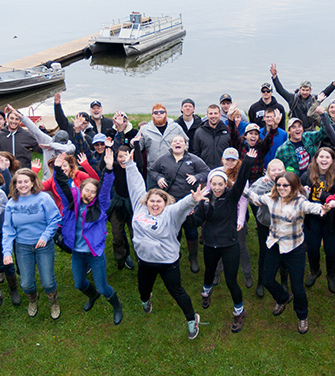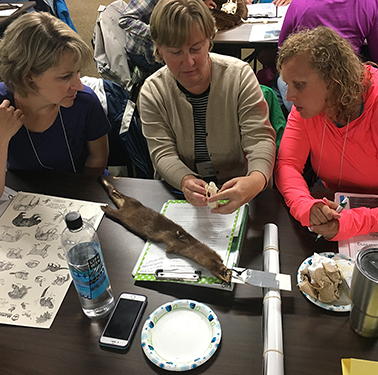Forestry & Natural Resources History
By: Dennis C. Le Master
Head, Department of Forestry and Natural Resources, 1988-2004
Forestry instruction at Purdue University began in 1905 with a two-semester sequence of courses listed as Biology 20 and 21. They were simply titled “Forestry” and taught by Professor Stanley Coulter, who later became the dean of science. Nine years later, 11 forestry courses were listed separately in the catalog under the heading “FORESTRY”, and so 1914 is recognized as the beginning of forestry at Purdue University. Burr N. Prentice joined the faculty as an instructor of forestry in the same year complementing Professor Coulter and another faculty member, an Assistant Professor Hoffer. Fifteen (15) students were enrolled in the program.
FNR History Collection
Instruction in forest products also began in 1906 when Professor Coulter and Professor W. K. Hatt, director of the material testing laboratory and later head of the School of Civil Engineering, set up two courses: Biology 28 and 29, respectively titled “Technical Forestry”, and “Forest Utilization”.
Professor Coulter is credited with starting forestry research at Purdue University. He authored a series of scientific papers on forestry that were published in the Proceedings of the Indiana Academy of Science during the period 1891-1926.
Forestry was transferred from the School of Science to the School of Agriculture in 1926 and elevated to the status of an academic department with Burr Prentice appointed as department head. This reorganization also involved moving from Coulter Hall to the then new Horticulture Building. The department remained in the Horticulture Building until 1976 when it was moved to the Agriculture Annex I (formerly the Seed House of the Agriculture Experiment Station), which was renamed the Forestry Building.
Instruction in wildlife began in the Department of Biology in 1926 and remained there until 1934 when it was transferred to the Department of Forestry. Wildlife instruction and research was under the direction of Professor E. B. Steen.
Extension, the third major departmental functional activity, began in 1930 with the appointment of Theodore E. Shaw as extension forester, Indiana’s first extension forester. Extension programs in forest products marketing and utilization were conducted in 1934.
The name of the Department was changed to “Forestry and Conservation” in 1939. Its current name was adopted in 1974. The forestry program was first accredited by the Society of American Foresters in 1942.
Authorization was received from the Graduate School in 1944 to offer a Master’s degree in forest production, forest economics, forest management, forest mensuration, silviculture, wildlife, and wood technology. The same year (1944), the Wood Research Laboratory was established and 800 square feet was assigned to the laboratory in Agricultural Hall Annex, now known as the Forest Products Building.
Authorization for offering a Ph.D. program was received in 1960. Russell E. Mumford, later a departmental faculty member, received the first Ph.D. in wildlife awarded at Purdue University. Fisheries and aquaculture instruction and research was authorized and initiated in 1969.
The “John S. Wright Fund for the Promotion of Forestry in Indiana” was established in 1964. This endowment was made possible through a generous gift of stock valued at $1.7 million, consisting mostly of Eli Lilly common stock, by John Shepard Wright, a member of the Purdue University class of 1892. Wright was a botanist, an Eli Lilly executive, and a friend of many forestry leaders in Indiana, particularly Stanley Coulter, Charles C. Deam, the first state forester of Indiana, and Purdue University Professor Daniel DenUyl.
Undergraduate enrollment peaked at 666 students in 1977, while graduate enrollment rose to 81 students in 1995. Outside funding reached a high of $4.0 million in FY 2000/01. The largest number of full-time faculty in the department was 31 in 1982. It subsequently dropped to 21 full-time faculty FTEs in FY 2000/01 and is currently at 27 (FY 2003/04).
The Hardwood Tree Improvement and Regeneration Center (HTIRC) was established in 1998.
Agricultural Hall, later named Entomology Hall, and more recently re-named Pfendler Hall, was renovated and expanded in 2002-2003 to house the forestry program of the Department of Forestry and Natural Resources and HTIRC, with the fisheries and wildlife programs remaining in the Forestry Building, and the forest products program staying in the Forest Products Building. The John S. Wright Research and Education Center at Martell Forest was constructed during the same time.






